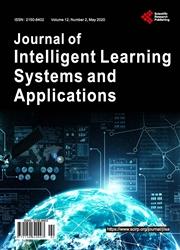Hybrid Intelligent Modeling for Optimizing Welding Process Parameters for Reduced Activation Ferritic-Martensitic (RAFM) Steel
引用次数: 10
Abstract
Reduced-activated ferritic-martensitic steels are being considered for use in fusion energy reactor and subsequent fusion power reactor applications. Typically, those reduced activated steels can loose their radioactivity in approximately 100 years, compared to thousands of years for the non-reduced-activated steels. The commonly used welding process for fabricating this steel are electron-beam welding, and tungsten inert gas (TIG) welding. Therefore, Activated-flux tungsten inert gas (A-TIG) welding, a variant of TIG welding has been developed in-house to increase the depth of penetration in single pass welding. In structural materials produced by A-TIG welding process, weld bead width, depth of penetration and heat affected zone (HAZ) width play an important role in determining in mechanical properties and also the performance of the weld joints during service. To obtain the desired weld bead geometry, HAZ width and make a good weld joint, it becomes important to set up the welding process parameters. The current work attempts to develop independent models correlating the welding process parameters like current, voltage and torch speed with weld bead shape will bead shape parameters like depth of penetration, bead width, HAZ width using ANFIS. These models will be used to evaluate the objective function in the genetic algorithm. Then genetic algorithm is employed to determine the optimum A-TIG welding process parameters to obtain the desired weld bead shape parameters and HAZ width.低活化铁素体-马氏体(RAFM)钢焊接工艺参数优化的混合智能建模
低活化铁素体-马氏体钢正被考虑用于聚变能反应堆和后续的聚变动力反应堆。通常情况下,那些活性降低的钢可以在大约100年内失去其放射性,而非活性降低的钢则需要数千年。制造这种钢的常用焊接工艺有电子束焊接和钨惰性气体(TIG)焊接。因此,为了增加单道焊的熔透深度,国内开发了一种TIG焊的变体——活性焊剂钨惰性气体(a -TIG)焊。在A-TIG焊接工艺生产的结构材料中,焊头宽度、熔深和热影响区宽度对材料的力学性能和使用过程中焊缝的性能起着重要的决定作用。为了获得理想的焊缝几何形状、热影响区宽度和良好的焊接接头,焊接工艺参数的设置变得非常重要。目前的工作试图利用ANFIS建立电流、电压、炬速等焊接工艺参数与焊缝形状之间的独立模型,以及焊头形状参数如熔深、焊头宽度、热影响区宽度。这些模型将用于评估遗传算法中的目标函数。然后采用遗传算法确定最佳A-TIG焊接工艺参数,得到理想的焊头形状参数和热影响区宽度。
本文章由计算机程序翻译,如有差异,请以英文原文为准。
求助全文
约1分钟内获得全文
求助全文

 求助内容:
求助内容: 应助结果提醒方式:
应助结果提醒方式:


